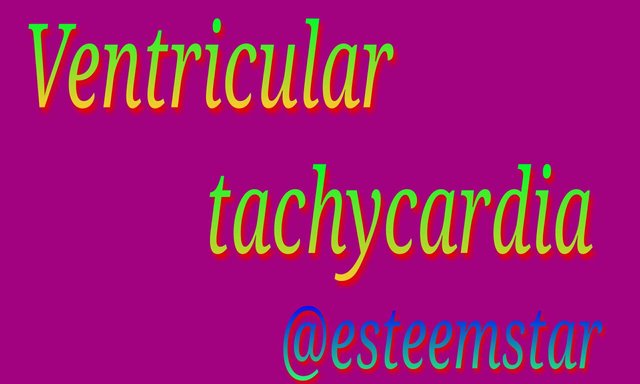Ventricular Tachycardia
WHAT IS VENTRICULAR TACHYCARDIA?

Definition
Ventricular tachycardia (VT) is defined as three or more consectutive ectopic beats, heart rate
usually 140–220 beats/minute with regular rhythm.
Causes
• Acute myocardial infarction.
• Myocarditis.
• Cardiomyopathy.
• Chronic ischemic heart disease (specially with poor left ventricular function).
• Ventricular aneurysm.
• Mitral valve prolapse.
• Electrolyte imbalance (mainly hypokalemia and hypomagnesemia).
• Idiopathic.
Symptoms
Palpitation, dyspnoea, dizziness, giddiness.
ECG Findings
• P wave—absent.
• QRS—broad >0.14 second, abnormal or bizarre pattern.
• Rate >100 beats/minute (usually, 140–220 beats/min).
Types of VT
• Sustained ventricular tachycardia.
• Nonsustained ventricular tachycardia.
Treatment
• If patient is haemodynamically unstable (such as hypotension, systolic BP< 90 mm Hg or
heart failure)—cardioversion (DC shock).
• If the patient is haemodynamically stable—IV amiodarone bolus followed by IV infusion. If
fails, cardioversion should be done.
• To prevent recurrence- b-blocker, oral amiodarone may be used.
• Correction of hypokalaemia, hypomagnesemia, hypoxemia and acidosis should be done.
• If all fails—automatic implantable cardioverter defibrillator device (ICD) orradiofrequency
ablation of focus should be done.
thanks for stay with me.